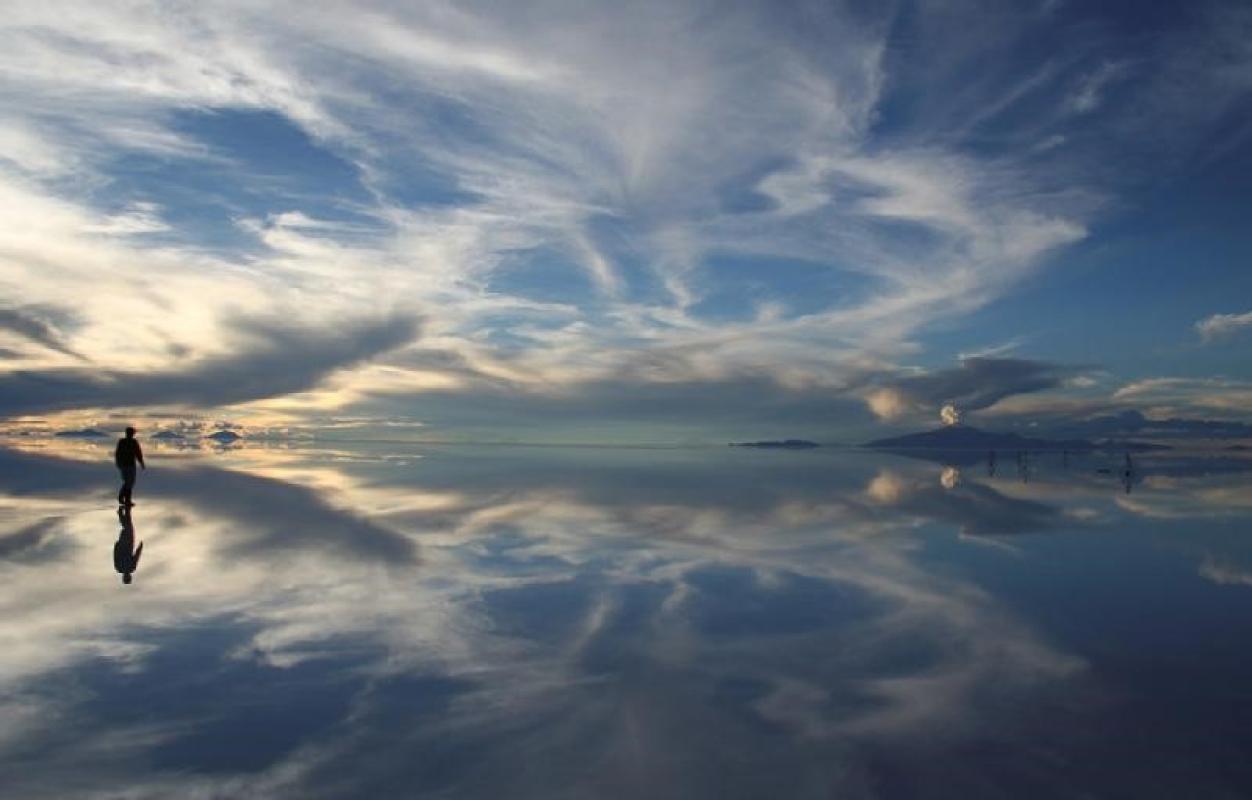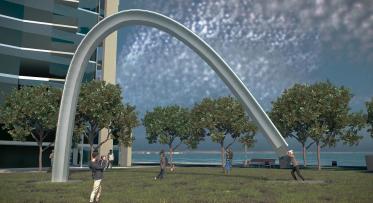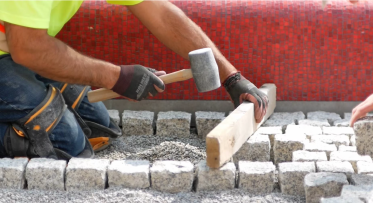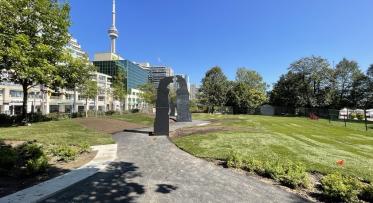Nuit Blanche on the Waterfront: The Work of the Wind
Thirteen art projects in The Work of the Wind will take over the waterfront for this year’s Scotiabank Nuit Blanche produced by the City of Toronto.
POSTED: OCTOBER 1, 2015 I PUBLIC ART, DESIGN, PARKS AND PUBLIC SPACES, WALKABLE NEIGHBOURHOODS
This Saturday night, hundreds of art works and installations will take over Toronto. It’s Scotiabank Nuit Blanche – one of the city’s most exciting annual events – where we collectively spend one sleepless night wandering around downtown, taking in a host of contemporary art projects.
This year is a particularly exciting one for us, because, for the first time, the waterfront will be featured prominently. Curator Christine Shaw sets her very thoughtful exhibition The Work of the Wind along Queens Quay.
Shaw takes the Beaufort wind force scale – an empirical measure of wind speed used by mariners since the 19th century – and reinterprets its often lyrical language through art works that each represent one of the thirteen points on the scale. From her curatorial statement:
In The Work of Wind, the Beaufort Scale of Wind Force becomes a diagram of prediction and premonition of the 21st century. Created by the British sea admiral Sir Francis Beaufort in 1807, the scale is a 13-part index capturing wind’s potential to compose at sea and decompose on land. Less than one km/h is Beaufort 0, “Calm,” with the description, “sea like a mirror; smoke rises vertically.” By force 4, “Moderate Breeze,” with a velocity of 20-30 km/h the wind creates “small waves; raises dust and loose paper.” By force 10, “Storm,” the wind moves between 88-102 km/h, and “the tumbling of the sea becomes heavy; trees uprooted, structural damage occurs.” The scale was used for the practical navigation of 19th century ocean space. Drawing on the language of the scale – drifting, tumbling, scattering, swaying, impeding, damaging, breaking, uprooting –The Work of Wind unfurls the 13 forces from 0 (Calm) to 12 (Hurricane) along Toronto’s shoreline. From works of manifest tangibility and poetic materiality to more activist, conceptual approaches, the combined effects of this zone offers an operatic experience of the elemental forces, compositional forms, and geopolitical processes of our contemporary times.
From the preview photographs, we can already see that the effect is sure to be extraordinary. This will be one Nuit Blanche experience you won’t want to miss.
Read on for a preview of the thirteen projects, summarized from the Nuit Blanche website.
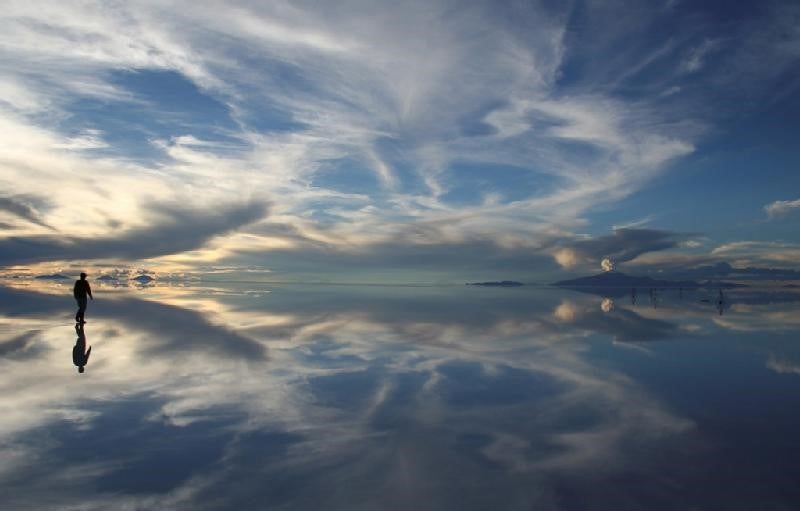
IMAGE – Beaufort 0: Cumulus, Tomás Saraceno. Photo: The Endless Series, 2006, courtesy of the artist, Tanya Bonakdar Gallery, New York and Esther Schipper, Berlin.
Beaufort 0: Cumulus, 2006/2008
Tomás Saraceno – Tucuman, Argentina
The panoramic video installation Cumulus turns spatial limitation to spectacular advantage. To realize this work, the artist travelled to the Salar de Uyuni in Bolivia – a three-acre salt lake in a desert positioned more than two miles above sea level. There, he set up a ring of thirty-two cameras to shoot sped-up footage of cloud movements, sunrises, and sunsets. After reddening dawns break, the sky fills and empties dramatically. A thin layer of water on desert terrain, the lake reflects skyscapes so that clouds and land fuse together.
LOCATION: Victoria Soya Mills Silos – Lake Shore Boulevard East & Parliament Street
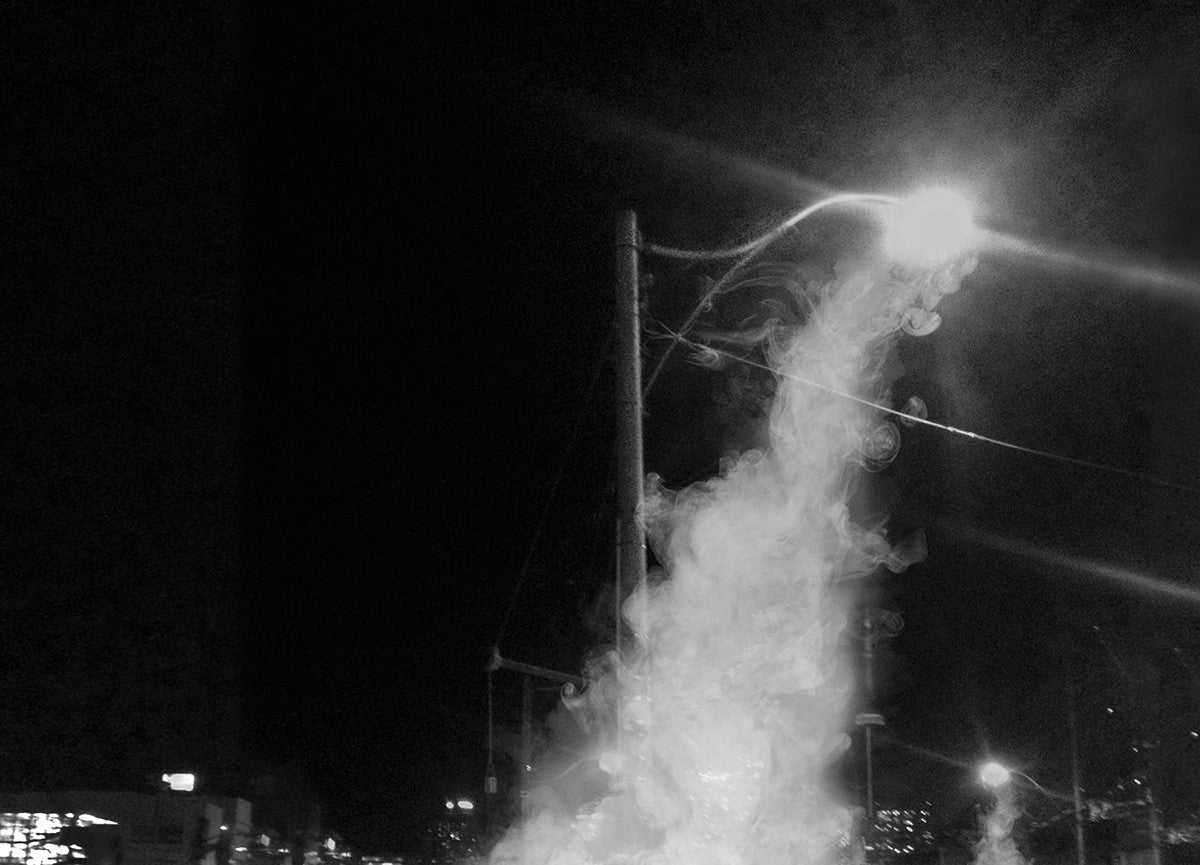
Beaufort 1: Dispersal Zone, 2015, Tim Knowles. Photo: Dispersal Zone, Photomontage #1a, 2015.
Beaufort 1: Dispersal Zone, 2015
The normally busy street is closed to traffic and many of the street lamps are turned off. The road becomes a gloomy, ghostly scene punctuated by a series of modified street lamps from which smoke falls in a glowing deluge to the ground. Given the Waterfront’s capricious weather conditions, the experience of Dispersal Zone changes dramatically hour by hour. If the wind is strong, the smoke is briefly captured by the light before rapidly dissipating in delicate, wispy veils. In calmer winds, the smoke billows and cascades in an illuminated broadening column and then pools at the foot of the lamppost. If the night air is humid, the smoke is caught in a dense fog and hangs floodlit in trees, alcoves, and doorways.
LOCATION: Queens Quay East & Bonnycastle Street (On Queens Quay East between Lake Shore Boulevard East and Yonge Street.)
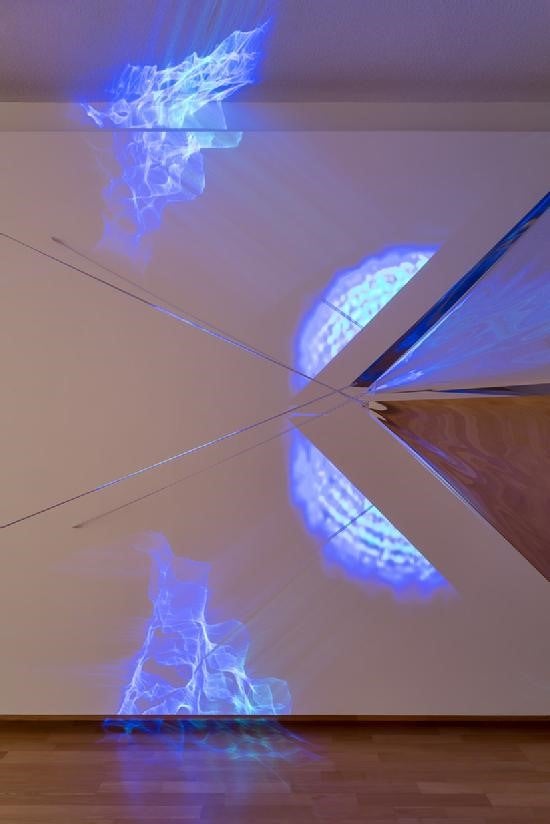
Beaufort 2: The Question of a Hunch (2015), Kika Thorne. Photo: The Question of a Hunch, SFU Gallery, 2015, courtesy of Blaine Campbell.
Beaufort 2: The Question of a Hunch, 2015
Kika Thorne - Vancouver & Toronto, Canada
In The Question of a Hunch, the artist extends her interests in geometry, the visible spectrum and magnetism as a field upon which to project questions regarding chemical composition and its political ramifications. Collapsing history, The Question of a Hunch combines the oldest visual representation of an atom with the most recent video capture of an electron.
LOCATION: George Brown College - Waterfront Campus – 51 Dockside Drive (Located in the loading dock on the West side of the building, between Corus and George Brown College.)
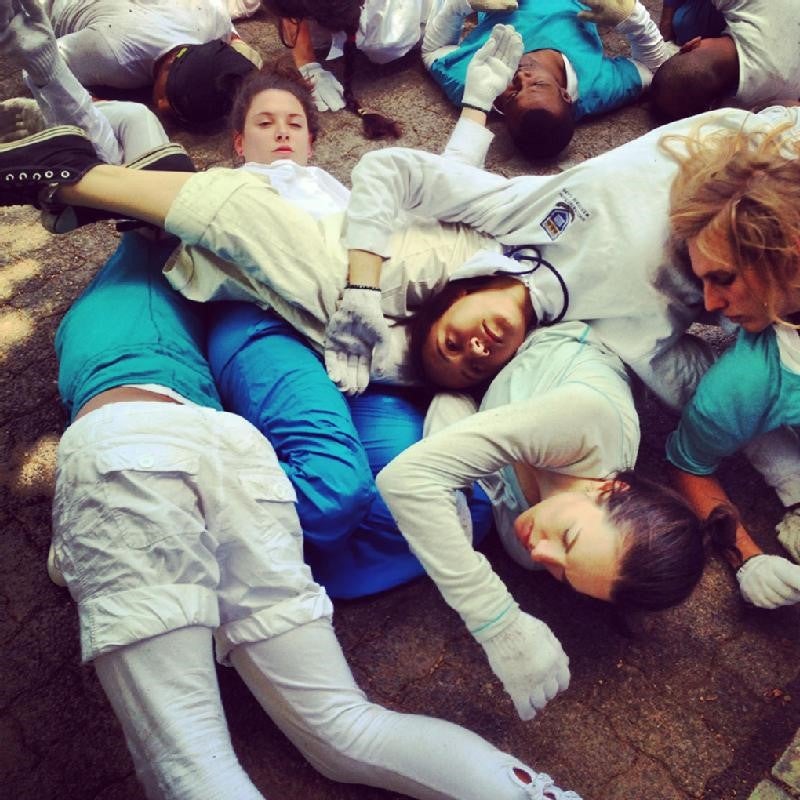
Beaufort 3: Glaciology, 2013, Anandam Dancetheatre. Photo: Glaciology (Cape Town), 2014, courtesy of Brandy Leary.
Beaufort 3: Glaciology, 2013/2015
Anandam Dancetheatre - Toronto, Canada
A human glacier slowly rolls through the city as a living landscape, continuously active for the full 12 hours. Glaciology is a site specific performance that combines choreography with human sculpture. This creates a surreal, constantly shifting image of bodies as landscape and simultaneously as capsules of history and memory; both human and geological.
LOCATION: Roaming – from 369 Lake Shore Boulevard East performers will travel Westward along Queens Quay to Lower Simcoe Street
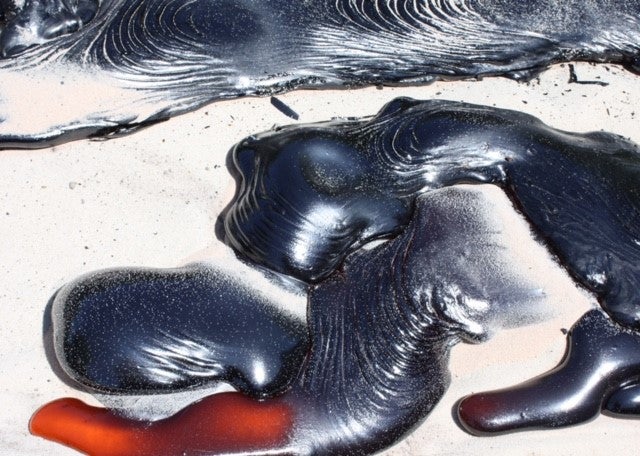
Beaufort 4: Lava Field No. 2, 2015, Robert Wysocki. Photo: Detail from continuous pour, 2012, courtesy of Jenny Wysocki.
Beaufort 4: Lava Field No. 2, 2015
Robert Wysocki - Syracuse, USA
This work is a geomorphically accurate lava field made using a customized coke-fired cupola generating temperatures upwards of 1800°C (coke is a fuel with a high carbon content, usually made from coal). This temporary land art piece is the product of five years of experimentation and development to achieve the creation of a mobile volcano.
LOCATION: 51 Dockside Drive – the Lava Pour takes place on the parking lot north of George Brown College
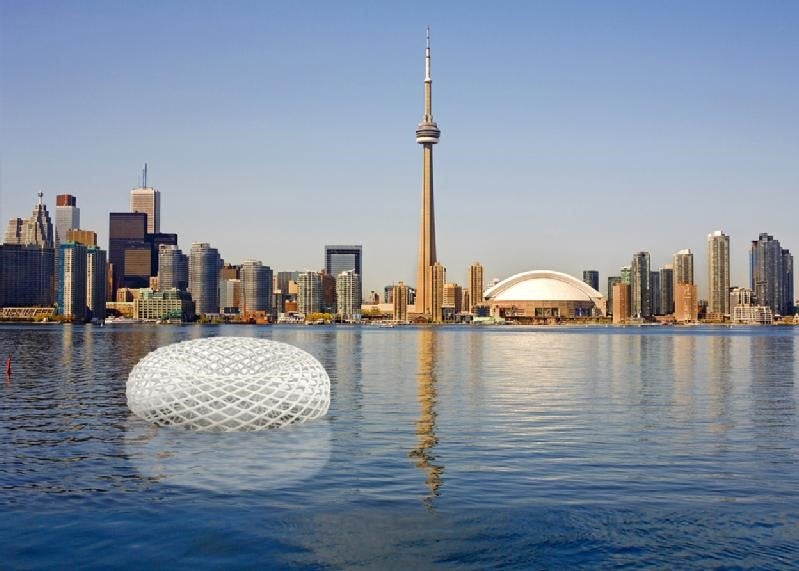
Beaufort 5: Torus, 2015, Mary Mattingly. Photo: Torus (Artist Rendering), 2015.
Beaufort 5: Torus, 2015
Mary Mattingly - New York, USA
Toroidal topologies are found in tornados, whirlpools, vortexes and magnets. They have come to symbolize the movement of the earth around a solar system. Floating this architectural vessel on the water directs our movement around a continuum, echoing the watery pathways it rests upon.
Just prior to sunset, the Torus is tugged to shore and tied to a pier where it will be docked for the night. As the boats depart a circular ceremony begins. People are invited to walk in and around the floating Torus and enjoy a serene space as the sun sets. Similar to the worldwide celebration of Yemenja, people are invited to celebrate the water.
LOCATION: 231 Queens Quay West (South of Canada Square Park. Access from Lower Simcoe Street and Queens Quay West)
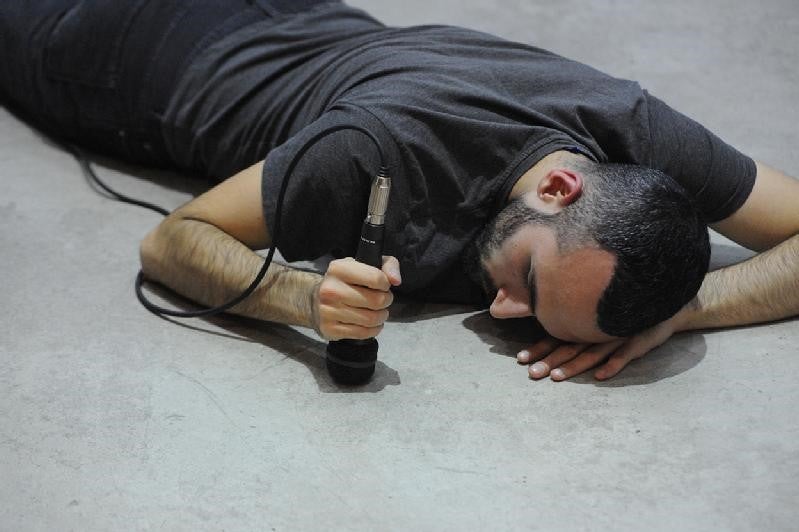
Beaufort 6: Hit, 2015, Christof Migone. Photo: Hit Parade (Toronto), 2012, courtesy of Henry Chan.
Beaufort 6: Hit, 2015
Christof Migone - Toronto, Canada
Hit is a performance using microphones as percussive instruments to sound a space. Performers hit various surfaces with the microphones, while invited artists mix the resulting sound into a live composition over an array of speakers. The performance is raw and visceral. The violence of the gesture is contrasted by the fact that the performers are lying down.
Hit is a live rhythm machine made up of arms armed with microphones used as hammers. The collection of overlapping chaotic beats results in a resonating rumble that resembles the dull roar of urban activity. Hit punctuates space and parcels up time. What if every moment of our lives was a hit?
LOCATION: Queens Quay E. & Cooper St. in the park
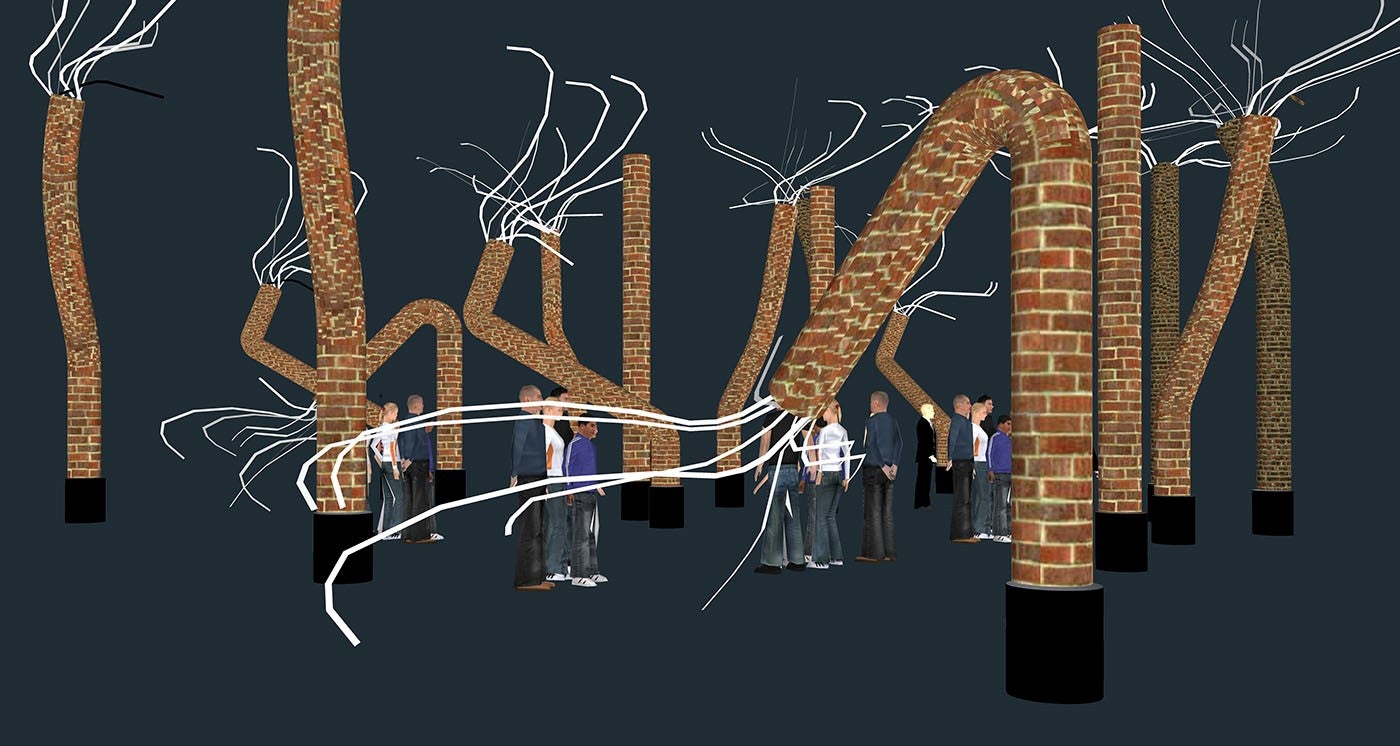
Beaufort 7: Destroyer and Preserver; hear, O hear!, Jon Sasaki. Photo: Sasaki smoke stacks, 2015.
Beaufort 7: Destroyer and Preserver; hear, O hear!, 2015
Tall, dancing, inflatable smoke stacks congregate on Toronto's waterfront for one night, reappearing like ghostly apparitions on a shoreline once abundant with chimneys. The installation re-imagines the manufacturing sector that once featured prominently on the lake, but has since been replaced by other land uses, such as residential, tourism and culture. It explores the changing fortunes of Toronto's “smokestack industry,” once hailed as a symbol of progress and prosperity, but has, as of this century become laden with negative connotations, shuttled out of sight or shuttered entirely.
The air tubes run throughout the night, dancing, swaying, gyrating and heaving like a writhing industrial park, belching out stylized “smoke” from the top of each. Their movements ebb and flow in a cyclical choreography, sometimes listlessly flopping around on the ground impeding visitor paths, other times frantically jittering about upright. The anthropomorphic forms might appear to some as tragic ghostly specters, hazily re-emerging on the waterfront like some sort of maligned industrial Brigadoon. Or they might be read by others as sinister taunting figures, resilient reminders of our continued dependence on carbon-emitting industries.
LOCATION: On the Waterfront Trail south of Queens Quay Terminal
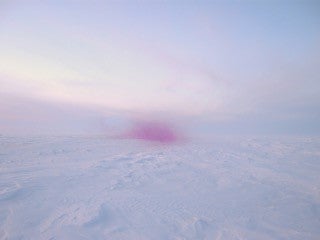
Beaufort 8: LOVELAND, 2009, Charles Stankievech. Photo: LOVELAND, 2009- 2011.
Beaufort 8: LOVELAND, 2009
Charles Stankievech - Okotoks & Toronto, Canada
LOVELAND is part of an ongoing series of “fieldworks” looking at remote outpost architecture, military infrastructure, the embedded landscape, and chemical warfare. It draws conceptual ties to Instant Loveland, a monumental 1968 purple colour-field painting by American artist Jules Olitski and a 1901 science-fiction dystopia titled The Purple Cloud. The video depicts an empty arctic landscape that gradually fills with purple smoke from a military grenade. On a seamless loop, it alternates the vast blinding white glare of the arctic with the smothering effect of the purple smoke screen, moving slowly toward, and then rushing past, the viewer with visceral effect. Shot on the Bering Sea—a site of increasing international contention over massive oil reserves – LOVELAND draws meaningful if cautionary connections between environmental extremes and complex fantasies.
LOCATION: 33 Harbour Square (Located on the pedestrian ramp.)
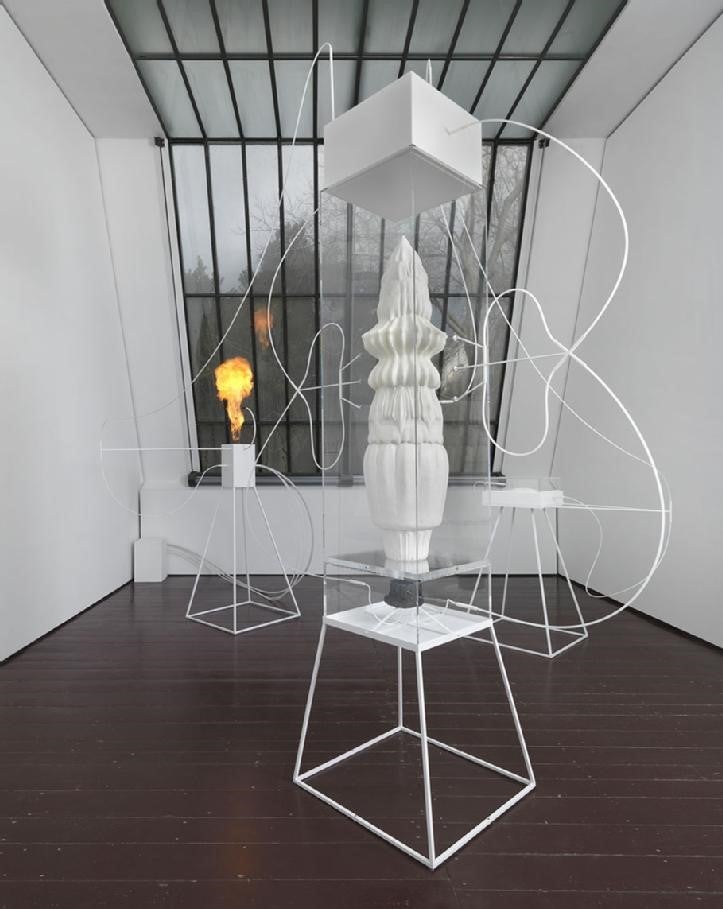
Beaufort 9: Requiem for Harley Warren (“Screams from Hell”), 2015, Marguerite Humeau. Photo courtesy of Jens Ziehe – TBA21 Thyssen Bornemisza Contemporary, Vienna.
Beaufort 9: Requiem for Harley Warren (“Screams from Hell”), 2015
Marguerite Humeau - Paris & London, France & UK
This installation is a new chapter in the artist’s quest 'to explore the means by which knowledge is generated in the absence of evidence.' This installation stages the voice of the earth itself, inspired by recordings of 'screams' emanating from various fissures in the planet’s crust, including the so-called door to hell in Turkmenistan, that have been reported in heterodox documentaries and in science fiction. It is comprised of a choir of shrieking and bellowing sculptures - three vitrines and their vocal catalysts. Each combines raw minerals and high-tech elements. One instrument uses the magnetic properties of erbium (normally used in fiber optic cables) to amplify and transmit the stalagmite’s testimony; another employs a neodymium amplifier to capture the electromagnetic speech of minerals; a third captures the roar of flame. The result is an unsettling chorus from the beyond.
LOCATION: WaterPark Place – 10 Bay Street (Located in the lobby adjacent to the escalators.)
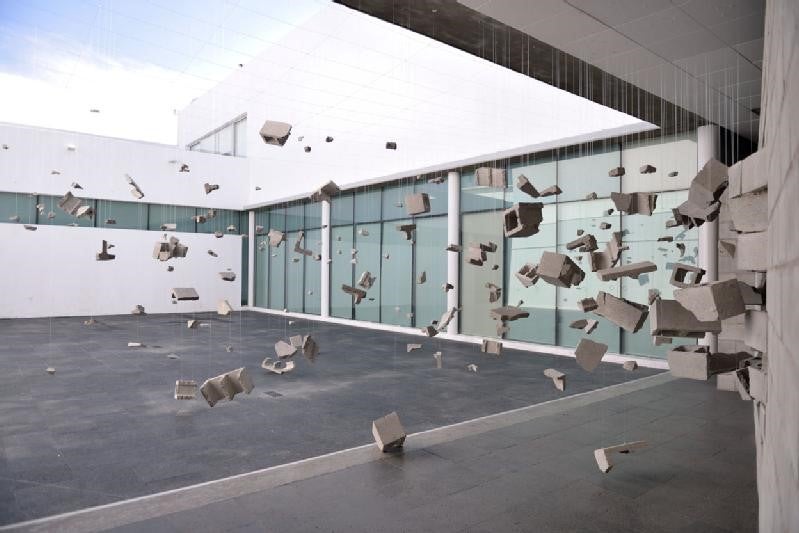
Beaufort 10: Frío Estudio del Desastre, 2005, Los Carpinteros. Photo: Frío Estudio del Desastre, Museo de Arte de Zapopan, 2014.
Beaufort 10: Frío Estudio del Desastre, 2005
Los Carpinteros - Havana & Madrid, Cuba & Spain
Frío Estudio del Desastre (Frozen Study of a Disaster) plays on the uncanny representation of space as a disembodied picture of reality by presenting what appears to be a three-dimensional reconstruction of a photographic image of an exploding wall. Shattered fragments from a cinder block wall suspend in the air, while a gaping hole in the wall indicates the point of impact of the blast responsible for this domestic ground zero. Visitors encounter this eerie scene as a three-dimensional representation, a forensic image from which we may reconstruct the forces unleashed by the detonation.
LOCATION: Exterior of Westin Harbour Castle – 1 Harbour Square
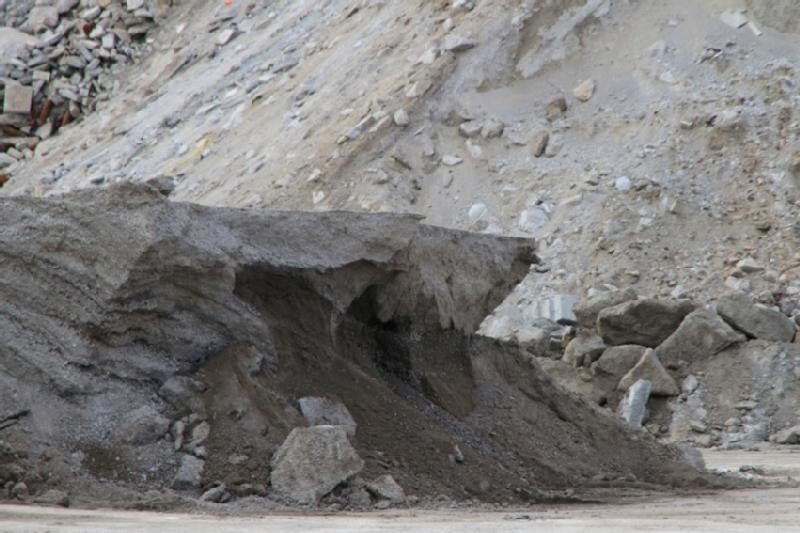
Beaufort 11: The Cleaving, 2015, Heather & Ivan Morison. Photo: The Cleaving (Research Image), 2015.
Beaufort 11: The Cleaving, 2015
Heather and Ivan Morison - London, UK
The Cleaving is a barricade across a city street, made from the detritus of a city that is remaking itself – steel formwork, rubble and broken slabs, concrete barriers, and charred roots from cleared lots.
LOCATION: Queens Quay East & Lower Jarvis Street
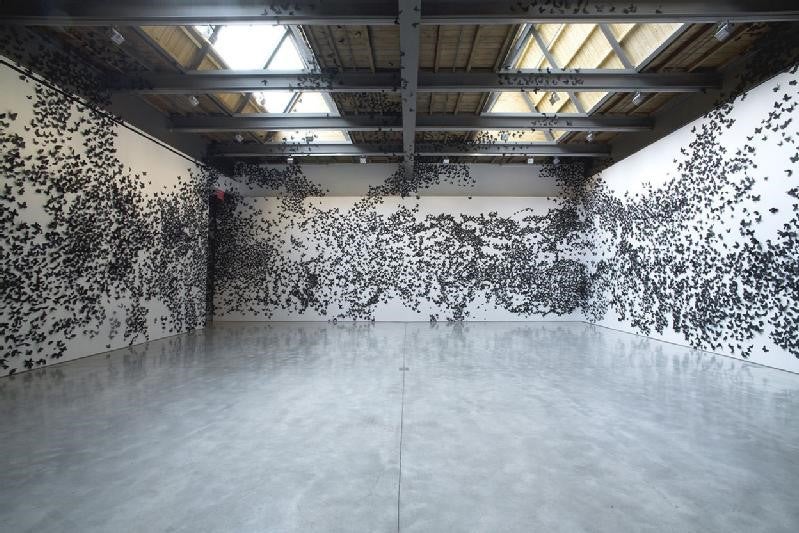
Beaufort 12: Black Cloud, 2007, Carlos Amorales. Photo: Black Cloud, installation views at Yvon Lambert Gallery, New York, USA, 2007, courtesy of Yvon Lambert Gallery, Diane and Bruce Halle Collection.
Beaufort 12: Black Cloud, 2007
Carlos Amorales - Mexico City, Mexico
Black Cloud, is an installation of 30,000 black moths cut out of paper and clinging to the walls and ceiling of The Power Plant´s clerestory. A dreamlike vision of a vaulted space filled with a swarm of moths inspired its materialization. From conception, this piece has exhibited in different places, such as art galleries, an art fair, museums, the house of a collector and in a former church. The piece is installed by using the entirety of the space and adjusting to the architectural conditions. The almost surreal yet frightening imagery of this fleet of insects creates a mysterious and oppressive atmosphere. It evokes the experience of a plague, where the boundaries between beauty and awe, good and evil, calm and calamity are constantly blurred and where one's imagination is called upon.
LOCATION: The Power Plant Contemporary Art Gallery – 231 Queens Quay West

